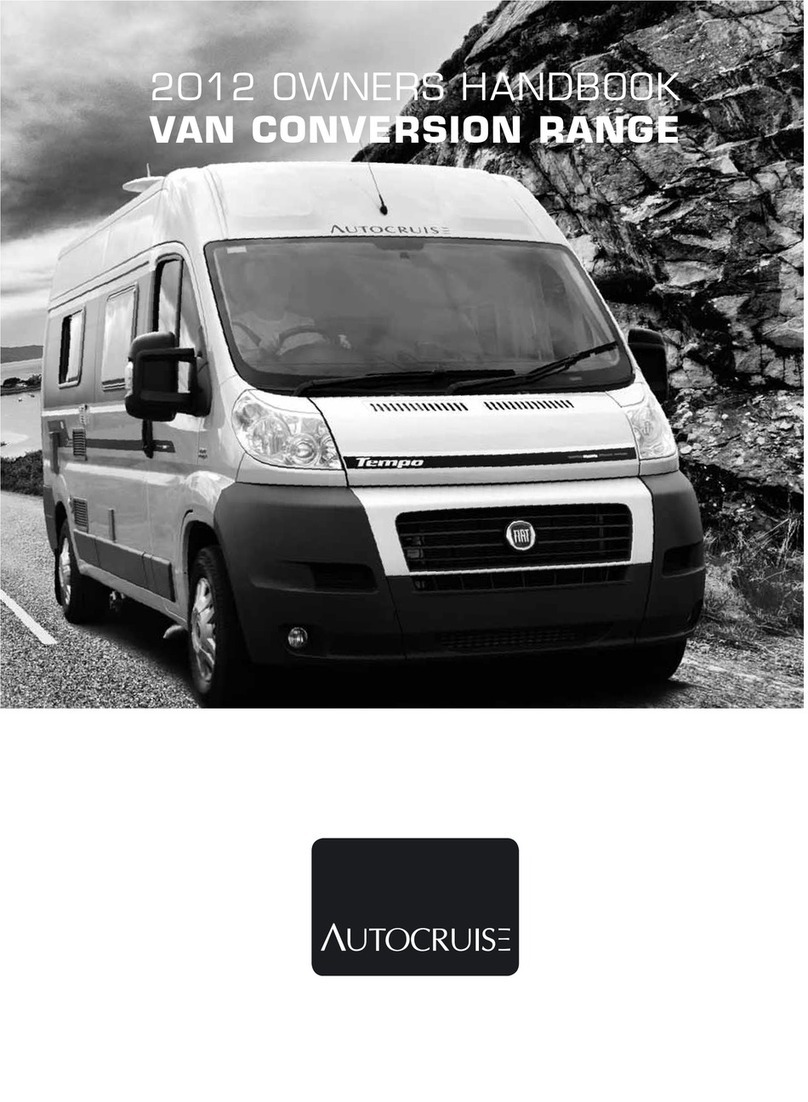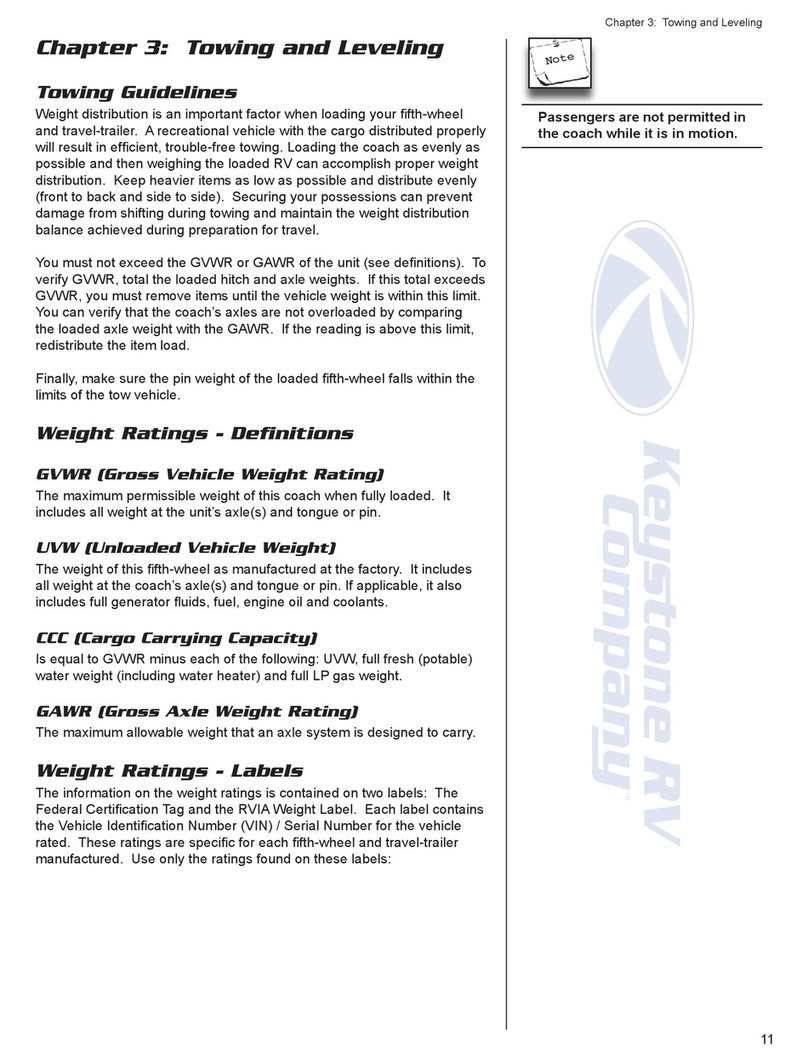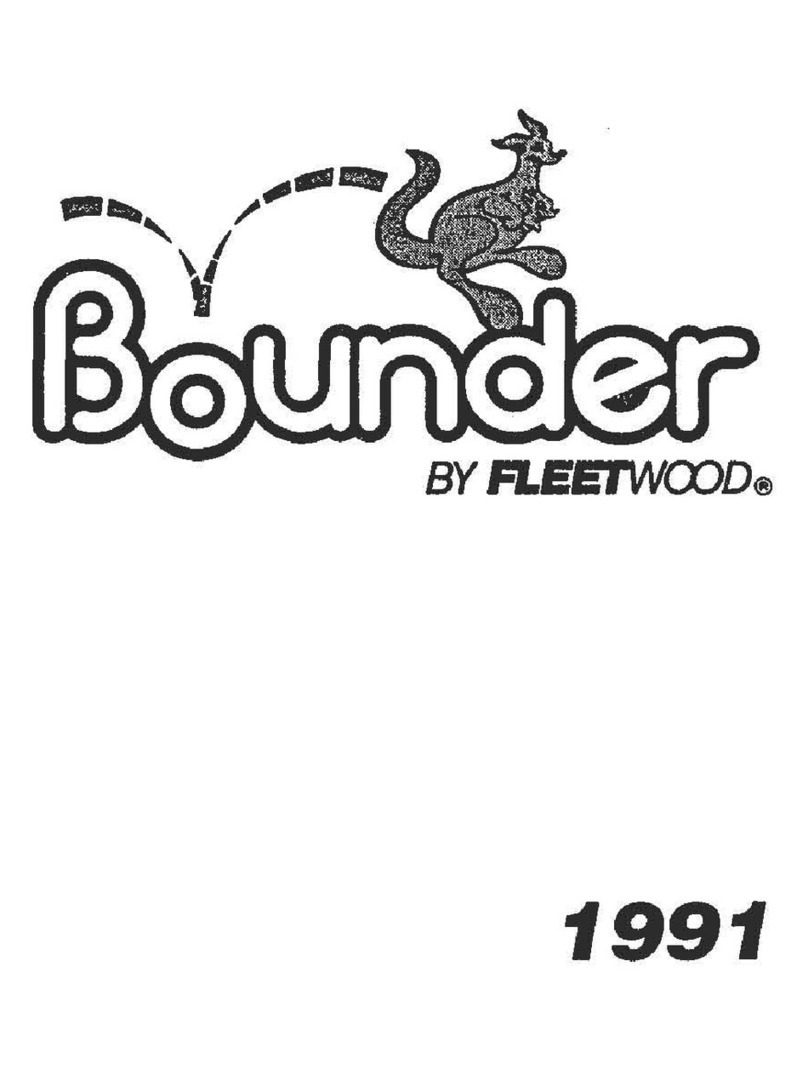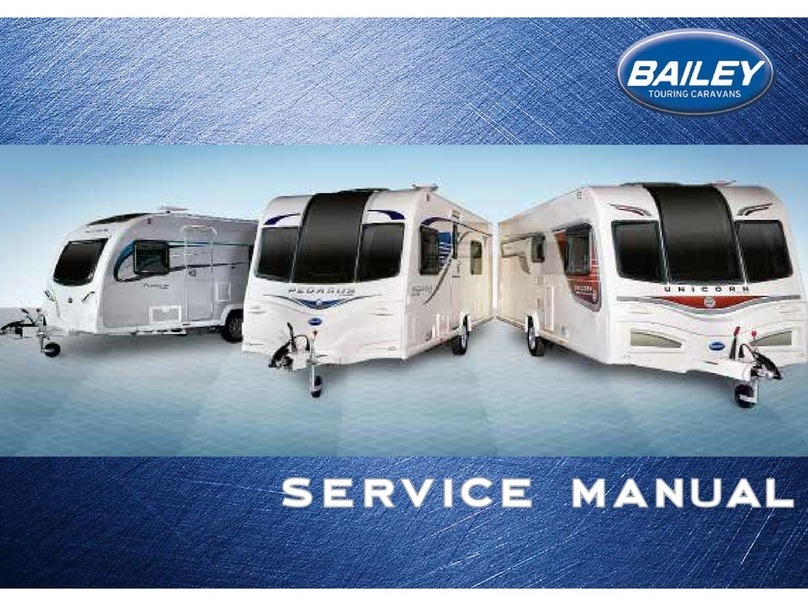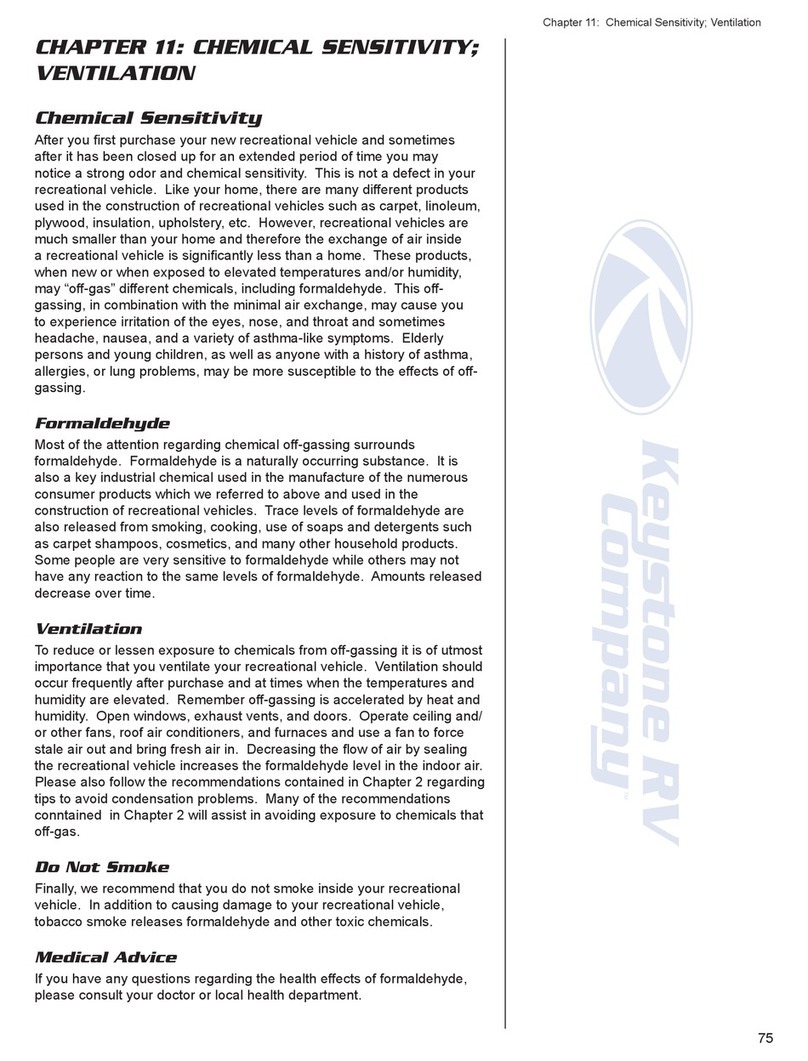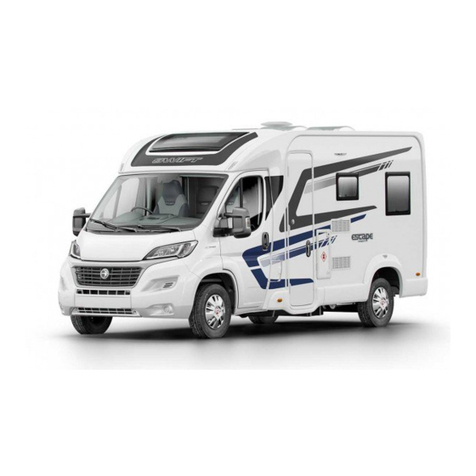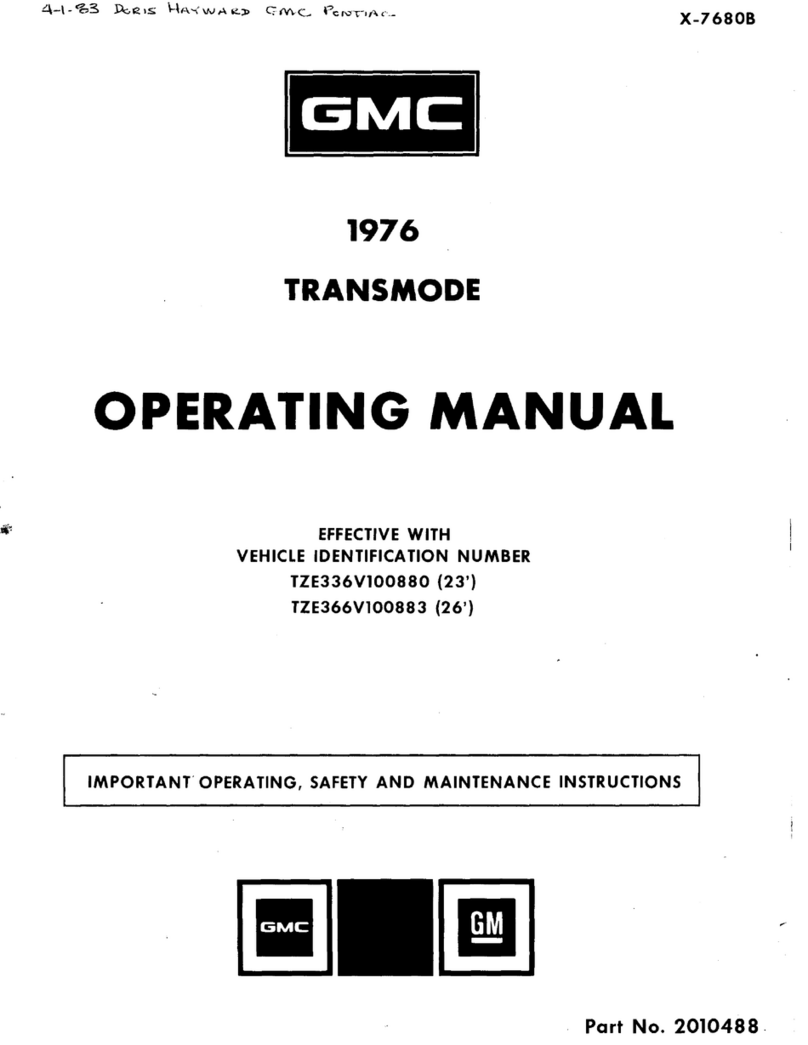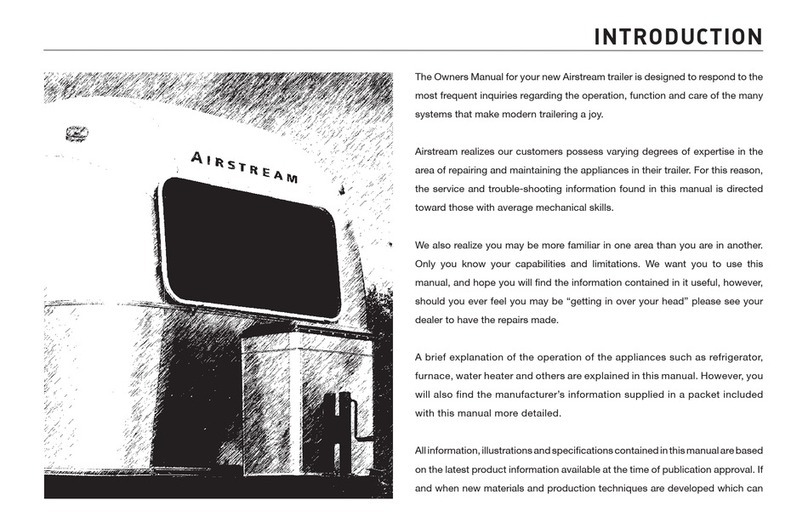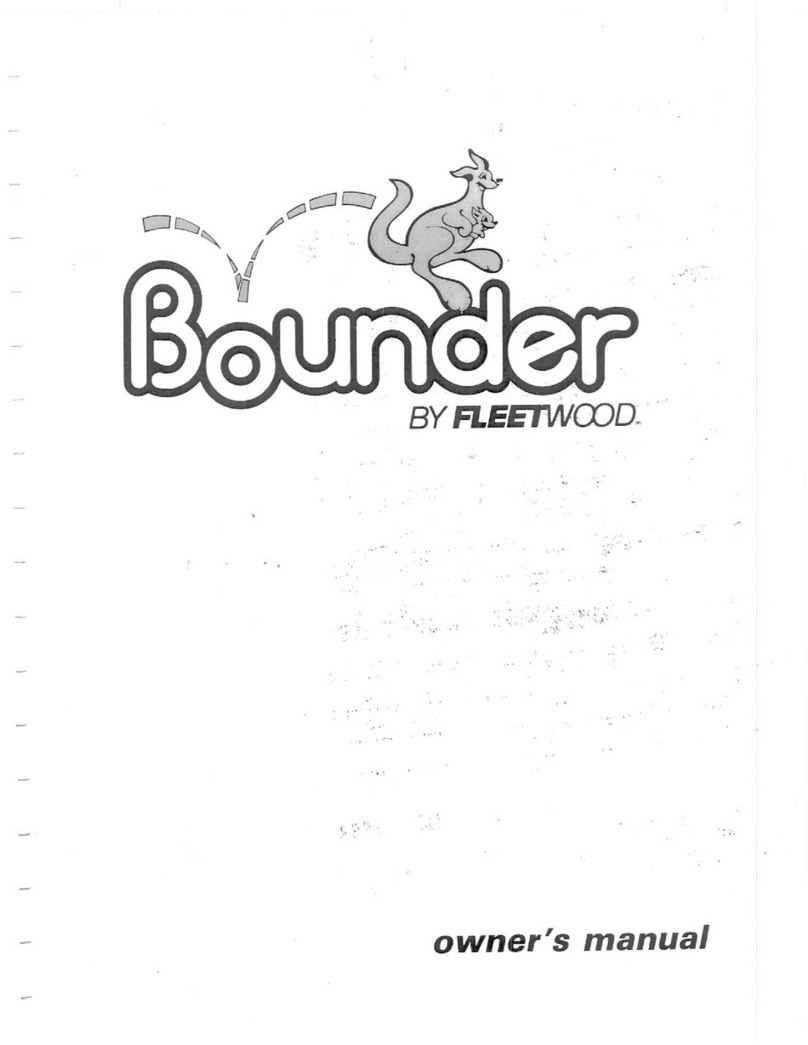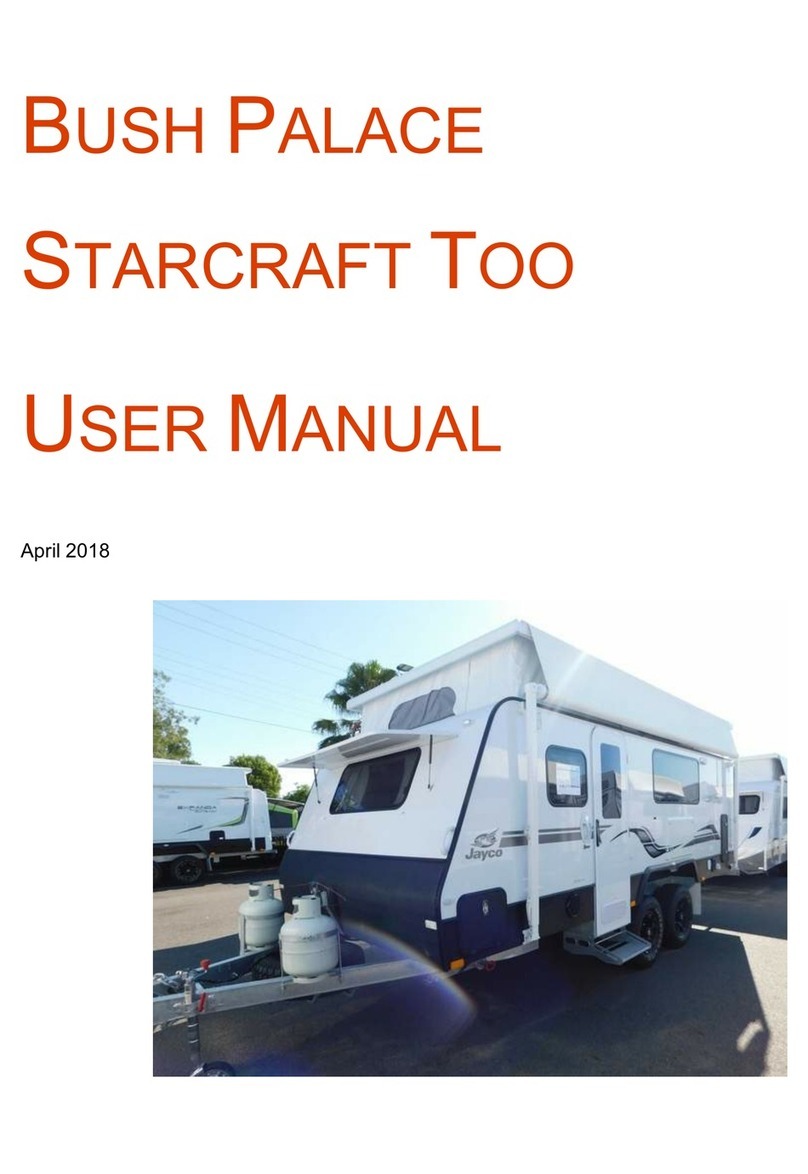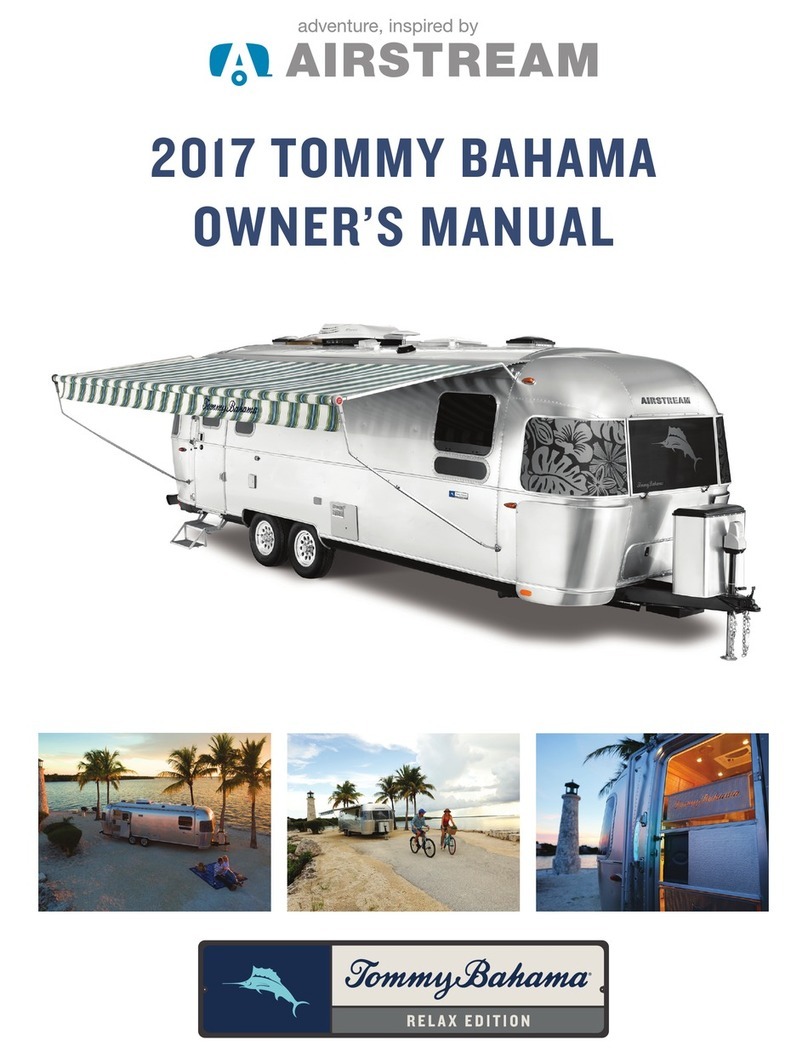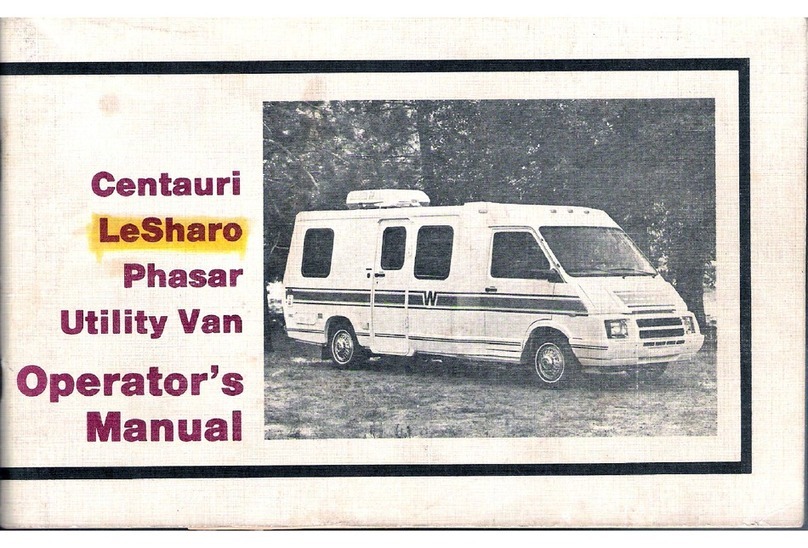Autocruise Star range 2008 User guide

Autocruise Motorhomes Ltd, Swinton Meadows Industrial Estate,
Meadow Way, Swinton, Mexborough, South Yorkshire S64 8AB
www.autocruise.co.uk
HB091
2008 owners handbook
CAMPER VAN RANGE
STAR RANGE
DRIVING RANGE

1
introduction
Dear owner
Thank you for deciding to buy one of our
new motorhomes. We are sure you will enjoy
many happy hours in it and we hope the
information and hints in this handbook will
heighten your enjoyment.
The handbook has been designed to give
you a general guide to the care, use and
maintenance of your motorhome.
Whether you are a new or an experienced
motorhome user the hints will help to protect
your investment.
The information contained will answer most
of your queries, but if there are any aspects
which are not covered please consult your
appointed dealer.
Happy touring!
Important - please quote the base
vin (vehicle identification number) in
all correspondence with your dealer
or Autocruise Motorhomes Limited
(Autocruise), this can be found on the
lower corner of the front windscreen
or on the Peugeot plate positioned on
the front cross member within the
engine compartment .
All the illustrations and descriptive matter in
this handbook are intended to give a general
idea of the motorhome. Changing market
and supply situations may prevent us from
maintaining the exact specification details
in this handbook. We therefore reserve the
right to alter specifications as materials and
conditions demand.
Dealers are not agents of Autocruise
Motorhomes Limited and have absolutely no
authority to bind Autocruise Motorhomes
Limited by any express or implied undertaking
or representation.
introduction

2 3
contents
Warranty Information ............................................................................................................ 4
The Motorhome Code ........................................................................................................... 13
Preparing for the Road ......................................................................................................... 17
‘En Route’ .............................................................................................................................. 23
Safety & Security ................................................................................................................... 26
Arrival at Site ........................................................................................................................ 31
Connecting Services .............................................................................................................. 33
Electrical Systems .................................................................................................................. 48
Equipment Details ................................................................................................................. 77
Motorhome Care ................................................................................................................. 172
Useful Information .............................................................................................................. 179
Index .................................................................................................................................... 184
contents
contents

4 5
warranty information
Warranty ................................................................................................................................... 6
Your Warranty Explained ............................................................................................................ 8
What to do if you Require Assistance ......................................................................................... 9
Annual Service/Inspection Record ............................................................................................. 10
Annual Service/Inspection Record stamps ................................................................................. 11
warranty information
warranty information

6 7
General terms applying to all three years
of the warranty period
The motorhome is not covered for:-
• Thefailureofacomponentforreasonsof
fair wear and tear.
• Damageresultingfromaccidents.
• Misuseofanycomponent.
• Normaldeterioration,corrosion,intrusion
of foreign or harmful bodies, lack of
servicing or negligence of any person other
than Autocruise which causes stoppage
of or impairment to the function of any
component of the motorhome.
• Replacementofpartswhichhavereached
the end of their effective working life
because of age and/or usage.
• Cleaningoradjustmentofanyassemblies.
• Cosmeticnishestokitchensinks,cooker
tops, vanity units, shower trays.
The warranty will be invalidated if the
motorhome has been neglected, misused,
modified or for hire or reward. The motorhome
will be deemed to have been neglected if it has
not been serviced and maintained as stated in
this handbook.
If any repairs are identified as being
necessary during an Annual Service, the
motorhome must be made available to an
authorised Autocruise Service Centre within
6 weeks for the work to be carried out. All
new motorhomes must be registered with
Autocruise within 6 weeks of purchase as new.
The warranty only applies to motorhomes
purchased and used within the UK, and for
continuous journeys abroad of no longer than
90 days per journey.
The cost of transporting, towing or moving the
motorhome by any means to or from the place
of repair is the responsibility of the owner.
The benefit of this warranty may be transferred
to a new owner if the motorhome is sold,
provided that the motorhome has been
serviced by an authorised Autocruise Service
Centre in accordance with the requirements
of this handbook, and details of the change of
ownership have been supplied to Autocruise
using the change of ownership form set out in
this handbook. Failure to notify Autocruise of a
change of ownership within 14 days of such a
change will invalidate the warranty.
This warranty only applies to motorhomes
purchased in the UK.
You have legal rights under UK law governing
the sale of consumer goods. This warranty
does not affect your legal rights. The name and
address of the warranty provider is:
Autocruise Motorhomes Limited,
Swinton Meadows Industrial Estate,
Meadow Way, Swinton, Mexborough,
South Yorkshire S64 8AB
To make a claim under this warranty, contact
the Autocruise Service Centre which supplied
your motorhome. Alternatively, details of your
nearest authorised Autocruise Service Centre
can be obtained by contacting Autocruise
Customer Care Department on
01709 571411, or enquiring on the website
www.autocruise.co.uk
warranty information
warranty
All the illustrations and descriptive matter
in this handbook are intended to give a
general idea of the motorhome. Changing
market and supply situations and our
policy of continuous product development
may prevent us from maintaining the
exact specifications detailed in this
handbook. We therefore reserve the right
to alter specifications as materials and
conditions demand.
Dealers are not agents of Autocruise, the
manufacturer of Autocruise have absolutely
no authority to bind the manufacturer by any
express or implied undertaking or representation.
All motorhomes (other than the engine, chassis
cab and associated parts referred to in this
handbook which are subject to the relevant
chassis manufacturer’s warranty) have a 3 year
Autocruise manufacturer’s warranty from the
date of purchase (or hire purchase), which is
subject to a chargeable annual service and
inspection being carried out at an authorised
Autocruise Service Centre.
During the warranty period, subject to the
exclusions set out in this section of the
handbook, the manufacturer, Autocruise, will
repair (or at its option, replace) all defective
parts of the motorhome. For any engine,
chassis cab and associated parts warranty
issues please contact your local Peugeot Agent.
The manufacturer will honour the warranty
until 36 months from the date of sale,
provided that the motorhome has been
serviced annually within 90 days before or 60
days after each anniversary of the original date
of sale. The third service must, however, be
carried out before the expiry of the 36 month
period from the original date of sale.
In the first 12 months the warranty
will cover:
Faults arising from a manufacturing defect but
not those which are a result of normal wear
and tear or those which relate to replacement
light bulbs and leisure battery.
Also not covered under the first year are faults
resulting from accidental damage or damage
caused by misuse of any component part of
the motorhome.
In the years two and three the warranty
will cover
1. All original components of the motorhome
including permanently fitted equipment
forming part of the manufacturer’s
original specification.
2. Water ingress and body delamination.
Specific exclusions to Autocruise Warranty
during Years 2 and 3
• Glassincludingheatshields,sink
lids, mirrors.
• Decals,mirrortransfers,resinbadges.
• Softfurnishingsincludingupholstery,
curtains, pelmets.
• Carpets,linoandoorcoveringsincluding
door mats, shower mats.
• Windowcatches,staysand
associated fittings.
• Blindsandyscreensincludingdoor,Heki
andotherrooights.
• Allhinges,catches,knobs,staysand
handles (interior and exterior).
• Adjustmentandnaturalmovementof
internaldoors,apsandfurniture.
• Audioequipmentincludingradios,
speakers, aerials and associated parts.
• Microwave
• TV
• Routinemaintenanceitemswhicharepart
of the annual service including lubricants,
rubber gas hose, the cleaning of the heater
andfridgeues,thereplacementofgas
jets, the resealing and/or replacement of
shower room sealant, and the adjustment
and lubrication of locks.
warranty information

8
9
assistance
WHAT TO DO IF YOU REQUIRE ASSISTANCE
Congratulations on purchasing an Autocruise
product. We are confident that you will enjoy
many happy holidays. However, should you
have an enquiry or require assistance with a
problem, we hope that this guide will be of
assistance to you.
If you have a problem, or enquiry with
regards to your new motorhome, please
follow these steps:
1. Check the Owners Handbook, paying
particular attention to the fault finding
advice at the back of the book.
2. Contact your supplying dealer
for assistance.
If you need to contact Autocruise, please
be aware of the following:
1. When contacting Autocruise, please quote
your name, postcode and chassis number
of your motorhome.
2. In most instances, the Customer Care
Team will involve your dealer in resolving
the issue you are experiencing.
3. If you are contacting the company by
email, letter or fax, the Customer Care
Team will respond to you within five
working days from the date of receiving
the correspondence.
4. If you are calling the Customer Care Team,
please avoid where possible, Mondays and
lunch times.
warranty information
your warranty explained
Your Autocruise motorhome has a three
year Autocruise Manufacturer’s Warranty.
The items covered during years one, two
and three vary, and are clearly explained
on pages 6 and 7 of this booklet.
Your dealer should fully explain the terms of
the warranty, which is also subject to annual
service requirements, at the time of the official
handover of your product.
Please sign this form to say that you have had
the details of the warranty and the annual
service arrangements fully explained.
Signing this document in no way affects your
statutoryrightsundertheSaleofGoodsAct.
Signed ...........................................................
Date ..............................................................
IMPORTANT Enter all your motorhome details on this page (see specification handbook).
RegistrationNumber
SerialNumber
ChassisNumber
Delivery Date
KeyNumber
Overall Length
Overall Width
Maximum External Height
Mass in Running Order
User Payload
Maximum Technical Permissible Laden Mass
Tyre Size Front: Rear:
Supplied and Pre-delivery Inspection by:
Service History
Signed/Dealer Date
warranty information

10 11
ANNUAL SERVICE/INSPECTION RECORD
MOTORHOME MODEL .............................................. REGISTRATIONNUMBER ...........................
CHASSISNUMBER .................................................... REGISTRATIONDATE .................................
1st SERVICE
DATE:
DEALER’S STAMP
We certify that an annual service has been
carried out in accordance with the handbook.
2nd SERVICE
DATE:
DEALER’S STAMP
We certify that an annual service has been
carried out in accordance with the handbook.
3rd SERVICE
DATE:
DEALER’S STAMP
We certify that an annual service has been
carried out in accordance with the handbook.
4th SERVICE
DATE:
DEALER’S STAMP
We certify that an annual service has been
carried out in accordance with the handbook.
5th SERVICE
DATE:
DEALER’S STAMP
We certify that an annual service has been
carried out in accordance with the handbook.
6th SERVICE
DATE:
DEALER’S STAMP
We certify that an annual service has been
carried out in accordance with the handbook.
warranty information
service inspection
MOTORHOMES - ANNUAL SERVICE/
INSPECTION RECORD
In order to comply with the warranty, you must
have your motorhome inspected and serviced
by an authorised Autocruise Service Centre at
least once per year.
It is important that the owner’s handbook
is stamped on the appropriate page by the
authorised Autocruise Service Centre.
Failure to do this will invalidate the warranty
and the transfer of the warranty on the change
of ownership.
The inspection should take approximately two
hours and will cover the areas dealt with in the
annual service check list. Any areas requiring
service and/or maintenance will be highlighted
by your dealer and we recommend that you
authorise any necessary work to be carried out.
Note:Itisessential,tovalidatethewarranty,
that an annual inspection be carried out by an
authorised Autocruise Service Centre covering
the items listed.
Just as the engine/gearbox/roadwheels need
regular servicing by your chassis dealer, so there
are components in your conversion that need
regular maintenance by your motorhome dealer.
These include the gas and electrical systems
and the seals in the bodywork. Your dealer
will complete the record in this handbook to
show that the work has been carried out.
1. Damp and lamination test.
2. Chassis and chassis to body security.
3. Corner steadies.
4. Motorhome step.
5. Roadlights,wiringandreectors.
6. Internallightsand12VDCsystem.
7. Waterheater-gasand230VAC.
8. Hob, grill and oven.
9. Refrigerator230VAC,12VDCandgas.
10.Gassystem.
11. Water pump, taps and water system.
12.Mains230VACsystem.
13. Windows and fittings.
14. Roof lights.
15. Furniture hinges/stays etc.
16. Exterior locks and hinges.
17. All internal vents.
18. Seals.
19.Blindsandyscreens.
20. Blown air heating and gas fire systems.
warranty information

12
7th SERVICE
DATE:
DEALER’S STAMP
We certify that an annual service has been
carried out in accordance with the handbook.
8th SERVICE
DATE:
DEALER’S STAMP
We certify that an annual service has been
carried out in accordance with the handbook.
9th SERVICE
DATE:
DEALER’S STAMP
We certify that an annual service has been
carried out in accordance with the handbook.
10th SERVICE
DATE:
DEALER’S STAMP
We certify that an annual service has been
carried out in accordance with the handbook.
11th SERVICE
DATE:
DEALER’S STAMP
We certify that an annual service has been
carried out in accordance with the handbook.
12th SERVICE
DATE:
DEALER’S STAMP
We certify that an annual service has been
carried out in accordance with the handbook.
13th SERVICE
DATE:
DEALER’S STAMP
We certify that an annual service has been
carried out in accordance with the handbook.
14th SERVICE
DATE:
DEALER’S STAMP
We certify that an annual service has been
carried out in accordance with the handbook.
warranty information

13
the motorhome code
Code of Conduct ..................................................................................................................... 14
The Country Code ................................................................................................................... 15
The Coastal Code .................................................................................................................... 16
the motorhome code

14
15
Departure
Leave the pitch clean and tidy.
On leaving, check out with reception paying
the required fees.
Wild Camping
Camping away from licensed sites, without the
permission from the land owner or his agents,
is not allowed in the United Kingdom.
When permission has been granted, all aspects
of this Code should be adhered to.
On no account should:
(a) Litter be disposed of other than in the
receptacles provided.
(b) Water be allowed to escape from the
vehicle.
(c) Chemical toilets be emptied except into
the disposal places agreed with the land
owner.
(d) Washing or similar be hung outside the
vehicle.
Parking
Motorhomes should only be parked in
approved places.
When using the facilities of a motorhome, care
and consideration should be given to those
around them.
Driving
Beforemovingoff,elevatedrooightsand
aerials should be lowered and correctly
secured, and top hinged windows closed.
Likewise all doors and access lockers for
gas containers and chemical toilets must be
properly secured.
Exterior steps should be properly retracted
and secured. When the vehicle is in motion
it is compulsory for all front seat passengers
and rear seat passengers to wear seat belts,
where fitted. When using a motorhome on
either the public highway or private roads the
Highway Code should be complied with and
full consideration given to other road users.
In the event of a motorhome travelling
slowly the driver of the motorhome should,
where possible, pull over in order to let other
traffic pass.
WHEN TRAVELLING, REFUELLING OR ON A
FERRY ENSURE THE GAS SYSTEM IS FULLY
ISOLATED AT SOURCE.
Handbooks (Chassis & Converter)
Before using a motorhome all aspects of
the handbooks, produced by the chassis
manufacturer and the converter, must be read
and adhered to.
The separate chassis manufacturer handbook
refers to your motorhome chassis and base
vehicle including care and maintenance.
Environment
Care and consideration should be taken to
protect the environment.
Observe the Country and Coastal Codes
shown overleaf.
THE COUNTRY CODE
Enjoy the countryside but respect its life
and work. More people than ever before
are exploring the countryside, interested
in farming, plant life, bird watching or just
observing the general wildlife. Whatever your
interest, there is a lot to learn, but please
observe the following code:
1. Guardagainstallriskofres.Hayand
heathland catch alight easily and once
ablaze are very difficult to put out.
REMEMBER: FIRE SPREADS QUICKLY.
2. Fasten all gates.
3. Keep your dog under proper control.
4. Keep to the paths across farm land.
5. Avoid damaging fences, hedges and walls.
6. Leave no litter.
7. Safeguard water supplies.
8. Protect wildlife, wild plants and trees.
9. Gocarefullyoncountryroads.
10. Respect the life of the countryside.
code of conduct & the country code
the motorhome code
code of conduct
CAMP SITES
Arrivals
Report to reception immediately on arrival.
Vehicle Movement
Keep to roadways unless otherwise directed.
Adheretospeedlimits.Notethattheseare
generally 10 mph (remember that the stopping
distance on grass is considerably greater than
on tarmac). Only a person in possession of a
current driving licence may drive on the site.
Park correctly as advised on your pitch. Where
possible leave 20 feet of free space around
your vehicle.
Use of Site Appliances
Use the electrical mains hook-up in the correct
manner and with caution.
Ensure that all fresh water taps/connections
are turned off after use. Have care and
consideration when using all facilities (toilets
and showers etc) and leave clean and tidy.
Young children should be supervised.
Waste Disposal
If the vehicle is not fitted with a waste water
tank, a suitable receptacle should be placed
below all waste water outlet pipes. Do not let
thesecontainersoverow.
Dispose of all waste water where instructed.
Emptyefuentfromchemicaltoiletswhere
instructed. To avoid possible damage to
sewage purification works, only approved
chemicaluidsmustbeused.Underno
circumstances should coal tar, phenol or
caustic-baseduidsbeused.
Disposable napkins and similar bulky items
must not be put into chemical closet emptying
points but should be wrapped in a polythene
bag and placed in the container provided.
Place all litter in containers marked for the
purpose.
Noise
Do not make excessive noise. Children should
be restrained from making excessive noise.
Flying kites and model aircraft and the use of
items like catapults or air-guns, as well as ball
games, should not be permitted among, or
close to other vehicles.
Musical instruments, record players, radios
and televisions should not be used to the
inconvenience of other people on the site.
Open and close doors quietly. Power
generators must be adequately silenced and
used with consideration.
Dogs and other Pets
All dogs and other pets should be kept under
control. Unless permission has been granted,
no animal should be allowed loose on the site
and leads must not exceed 10ft.
Noanimalsshouldbeallowedintheshower/
toilet blocks. Do not let dogs foul the site.
Fire Precautions
Adhere to and take note of fire precautions
noting the whereabouts of the fire points.
WARNING: PROVIDE ONE DRY POWDER
FIRE EXTINGUISHER OF AN APPROVED
TYPE OR COMPLYING WITH EN3, OF
AT LEAST 1KG CAPACITY, BY THE
MAIN EXTERIOR DOOR AND A FIRE
BLANKET NEXT TO THE COOKER.
FAMILIARISE YOURSELF WITH THE
OPERATING INSTRUCTIONS ON YOUR
FIRE EXTINGUISHER AND THE LOCAL FIRE
PRECAUTION ARRANGEMENTS.
When using a dry powder extinguisher it is
suggested that the motorhome be evacuated
until the powder has settled, to avoid
inhalation.
Unless permission has been granted, barbecues
should not be used.
If permission is given, consideration should be
given to the annoyance that can be caused to
other users of the site.
Open fires are not allowed.
Awnings and Tents
Awnings and tents should only be used when
permission has been obtained.
When on grass and staying for more than a
fewdays,thegroundsheetand/orsideapsof
awnings should be periodically raised in order
to avoid damage to the ground.
the motorhome code

16
As our coastlines are increasingly used for
recreation and education, the following
suggestions are made to enable us to
enjoy our inheritance and preserve it
for posterity.
Disturbance may mean DEATH.
DONOTtrampleabout,ormoverocks
unnecessarily.
DONOTfrightensealsorseabirds.
DONOTspilldetergents,solventsorfuelfrom
boats as these can kill marine life.
When sailing, moderate your speed - the wash
from a fast boat can destroy banks and nests.
Live molluscs and crustaceans need not be
collected as souvenirs - dead shells can usually
be found.
Shellfish can take years to grow and fines
can be imposed for not observing national
regulations.
DONOTpullupseaweedsunnecessarily.
Make your visit instructive - not destructive.
Look at material - don’t remove it. Take notes
and photographs, not specimens.
Observe by-laws and be considerate to others.
NationalTrustpropertyandCountryParkshave
regulations to protect the wildlife. Follow these
and the Country and Coastal Codes.
the coastal code
the motorhome code

17
preparing for the road
Before Moving Off ................................................................................................................... 18
Motorhome Terms ................................................................................................................... 18
LoadingofVehicle ................................................................................................................... 19
Large Storage Areas ................................................................................................................. 19
Roof Loading ........................................................................................................................... 20
Tyres ......................................................................................................................................... 20
Dedicated Travelling Passenger Seats......................................................................................... 20
Three Point Seat Belts ............................................................................................................... 21
Driving Licence.......................................................................................................................... 21
VehicleClassications .............................................................................................................. 22
Advice on towing.......................................................................................................................22
preparing for the road

18
19
(ii) The trailer is intended to be towed slightly
nose heavy. The nose weight can be
adjusted by distribution of the load. The
nose weight should be approximately 7%
of the actual laden weight (but not greater
than the hitch capacity) and at the same
time suit the motorhome requirements.
See ‘Advice on Towing’ page 22.
LOADING OF VEHICLE
WARNING: loads must not be exceeded.
The driver is responsible for arranging
the loads so that they comply with
the technical weight limits of the
specific motorhome model. See
specification handbook.
Correct weight distribution is an important
factor in ensuring your vehicle is well
balanced and easy to drive. It is therefore
necessary to load your motorhome carefully
making sure all heavy articles are evenly
distributed and are preferably placed in the
lower lockers or bed boxes.
WARNING: Do not travel with televisions
or microwaves in overhead lockers unless
the appliance was supplied fitted to your
motorhome by the manufacturer.
Although it is essential to ensure that the total
weight of your motorhome does not exceed
the stipulated Maximum Technically Permissible
Laden Mass, (MTPLM), it is important to
remember that the front and rear axles also
have individual maximum weights which must
not be exceeded.
To ensure adequate road holding the load
on the front axle, under all conditions,
must not be less than 40% or more than
70% of the total weight.
Ensure you distribute the payload equally on
each side of the vehicle to avoid an imbalance.
These weights, together with the MTPLM, can
befoundontheVIN(VehicleIdentication
Number)platelocatedunderthebonneton
the front cross member.
Warning: Turn off all gas appliances while
the vehicle is in motion. If a heating
system is fitted isolate all appliances
except the heater.
Please take care to ensure you have
allowed for the masses of all the items
you intend to carry in your motorhome
e.g. passengers, optional equipment,
essential habitational equipment and
personal effects such as clothing,
food, pets, bicycles, sailboards, sports
equipment etc.
LARGE STORAGE AREAS
The large storage areas provided in some
motorhome layouts are designed solely for the
purpose of carrying personal possessions, these
areas must not be used:
• Asahabitationarea(egliving,sleepingor
cooking).
• Tocarrypassengers,animalsorlivestock.
• Fortheinstallation(oruse)ofanyLPGgas
operated appliances (unless supplied fitted
by the manufacturer).
• ForcarryingLPGgasbottlecylinders.
• Tocarryanyammableliquids,unless
properly stored, sealed and secured.
• Fortheoperationofanelectrical
generator.
• Insuchawaythattheloadexceedsthe
MTPLM, and/or minimum and maximum
axle loads.
Care must be taken to ensure that exterior
doors are closed, locked and that all
possessions are properly stored and secured
before setting off on any journey.
loading of vehicle & large storage areas
preparing for the road
BEFORE MOVING OFF CHECK:
• Gascylindersandallgasoperated
appliances have been isolated, including
fridge, water heater, oven and space heater.
• Gascylindersarecorrectlypositioned,
secured and turned off unless using
en-route heating.
• Loosearticlesincludinglutonladderare
stowed securely. Do not stow tins, bottles
or heavy items in overhead lockers.
• Alllockersandcupboarddoorsareclosed
and secured.
• Maintableisstoredorlockedinits
transit position.
• Fridgeison12Voperationanddoorlock
is set.
• 230Vmainsinputsocketapis
securely closed.
• Alldraintapsareclosed.
• Tyrepressuresandwheelnuts.
• Rearcornersteadiesareraised.
• Exteriorroofrackladderisraised
and secured.
• Allwindows/doors/rooightsareclosed
and secured.
• TVaerialisloweredandlocked
into position.
• Exteriorstep(wheretted)isretracted/
folded in.
Special attention must be taken to ensure
all top hinged windows as well as the Luton
windowsandrooightsareclosedwhenin
transit. All units should be fully closed and
latched to prevent damage. The motorhome
exterior door should also be locked.
MOTORHOME TERMS
Mass in Running Order:
This is the mass of the motorhome as stated
by the manufacturer, i.e. ex works weight
including the driver with 90% fuel / tools
and hook up cable and standard fixtures and
fittings, in compliance with European Directive
92/21/EEC (Masses and Dimensions).
Note:QuotedMROissubjecttotolerance,
due to weight variation of materials used in
Motorhome construction.
Maximum User Payload:
The maximum allowable weight to be put
into the motorhome whilst it is being driven.
This is made up of 4 sections: Personal effects,
conventional load, optional equipment and
essential habitation equipment.
The Maximum User Payload is the difference
between the Maximum Technically Permissible
Laden Mass and the Mass in Running Order.
Personal Effects:
Those items which a user can choose to
carry in a motorhome and which are not
included as Essential Habitation Equipment or
Optional equipment.
Conventional Load:
A mass allowance for each designated
passenger seat.
Optional Equipment:
Items made available by the manufacturer over
and above the standard specification of the
motorhome.
Essential Habitation:
A mass allowance for liquids in systems not
accounted for within the MRO.
Maximum Technically Permissible
Laden Mass:
The maximum weight for which the
motorhome is designed for normal use when
being driven on a road, laden. This mass takes
into account specific operating conditions
including factors such as the strength of
materials, loading capacity of tyres etc.
WARNING: UNDER NO CIRCUMSTANCES
SHOULD THE MAXIMUM TECHNICALLY
PERMISSIBLE LADEN MASS OF THIS
MOTORHOME BE EXCEEDED.
Nose weight:
The static mass of the trailer towing device on
the rear of the towing vehicle.
Notes:
(i) When measuring the noseweight it is
important that the trailer is loaded.
before moving off & motorhome terms
preparing for the road

20
21
THREE POINT SEAT BELTS
This section refers to the seat belts located in
the habitation area of your motorhome.
Fastening the seat belt:
Insert tongue into buckle; a positive ‘click’
indicates correct assembly.
Releasing the seat belt:
Press the red release button, the tongue will be
ejected from the buckle.
• Thebeltisdesignedforusebyoneperson
and must not be put around a child seated
on a person’s lap.
• Thebeltissuitableforrestrainingmost
child seats and boosters.
• Thebeltshouldatalltimesbeadjusted
and used in accordance with the
instructions.Noexcessiveslacknessshould
be present.
• Onceinstalledthediagonalshouldpass
across the centre of the shoulder and the
buckle should lie just on or below the hip.
• Avoidtwistingthewebbingduringuse.
Webbing must not be allowed to chafe
against sharp edges.
• Donotmakealterationsoradditionsto
the belt.
• Beltsthathavebeencut,frayed,damaged
or stressed through impact should be
replaced. After impact the motorhome
anchorage points should also be checked.
• Tocleanusewarmsoapywateronly.
• Periodicinspectionoftheinstallationwill
ensure reliability of the seat belt.
DRIVING LICENCE
Licences issued to drivers who passed their car
driving test before 1st January 1997 include
categories B+E and C1+E which gives them
entitlement to drive motor vehicles up to
7500kg MTPLM.
Drivers who passed their test on or after this
date have category B entitlement only, which
restricts the entitlement to motor vehicles
with up to 8 passenger seats and an MTPLM
of up to 3500kg with trailers up to 750kg
MTPLM (4250kg combined) or larger trailers
providing the combination of the trailer and
towing vehicle does not exceed 3500kg and
the MTPLM of the trailer does not exceed the
unladen weight of the towing vehicle.
Drivers who passed their test on or after
the 1st January 1997 will need to take an
additional test(s) to gain the B+E and C1+E
entitlement.
A number of Autocruise motorhomes have
an MTPLM greater than 3500kg, therefore
you must check you have the driving licence
entitlement for the vehicle you drive.
three point seat belts & driving licence
preparing for the road
ROOF LOADING
Some motorhome roofs can be fitted with a
roof rack (optional).
A maximum load of 50kgs can be evenly
distributed on the roof rack system.
ThisgureMUSTNOTbeexceeded.
Note:Whenloadingtheroofrack,makesure
the load is spread evenly and do not allow
sharp objects to come into contact with the
roof surface.
Do not apply excessive load to the rear
suspension of your motorhome or allow
the vehicle to reverse with the roof
rack access ladder in the down position,
touching the ground. This may cause
excessive strain on the ladder fixing
points.
The roof areas, up to the over cab section, are
capable of withstanding an average person’s
weight (13 stone or 82.5kg).
Note:Donotwalkontheovercabsection.
WARNING: the roof may become slippery
in adverse conditions, dry wipe before
attempting to walk on roof section.
Extreme care should be taken to avoid
falling from the vehicle.
WARNING: When walking on the roof,
deck type shoes should be worn – not
leather soles.
WARNING: CAMPER VAN RANGE: Roof
bars are for styling only. They are not
intended to carry loads.
TYRES
If a wheel or tyre fitted to a wheel is
changed any replacement must be of the
same type of construction and size.
The law requires that the tyres and pressures
must be suitable for the use to which they
are being put. The minimum tread depth
must be 1.6mm throughout a continuous
band comprising the centre three-quarters
of the breadth of the tread and around the
circumference of the tyre.
Please refer to base vehicle manufacturer’s
handbook for tyre pressure information. This
may also be displayed in the driver’s door
aperture.
DEDICATED TRAVELLING PASSENGER
SEATING
Seat belts are fitted to all travelling seats.
Travelling seats are designated by the
manufacturer and vary according to the layout
you have purchased. Each seat is homologated
i.e. tested to all relevant safety requirements.
NEVERtravelinorattempttoinstallaseatbelt
to a non-designated seat.
WARNING: Side facing seats are designed
for habitational use only, not when the
vehicle is in motion.
SEAT BELTS AND LEGISLATION
Designated driver and passenger seats are
fitted with seat belts and MUST be worn.
Children, aged up to 3 years of age, must wear
an appropriate child restraint suitable for their
age and weight.
Children from 3 years of age and up to 135cm
(4’5”) in height, or 12 years of age, whichever
is reached first must use a restraint suitable for
their age.
Children over 135cm (4’5”) in height or aged
12 or 13 years must wear a seat belt.
Note:Itisthelegalresponsibilityofthedriver
To ensure children aged up to 14 years old are
suitably restrained.
For passengers aged 14 and over, it is their
responsibility (not the driver) that a seat belt is
worn.
Designated passenger seats
within the habitational
compartment of your
motorhome are identified
(fig. 1).
Seat belts are fitted for
your safety and must be
worn unless a ‘Certificate
of Exemption from Compulsory Seat Belt
Wearing’ is held. This Certificate must be
produced if asked for by the Police – seat belt
offences can result in a fine.
roof loading, tyres & passenger seating
Fig. 1
preparing for the road

22
vehicle classifications & advice on towing
VEHICLE CLASSIFICATIONS
Motorhomesupto3500kgMTPLMareP/LGV
(PrivateLightGoodsVehicles),motorhomeswith
an MTPLM over 3500kg and up to 7500kg are
P/HGV(PrivateHeavyGoodsVehicles).Theseare
used in defining MOT classifications and vehicle
excise duty (road tax) classifications.
ADVICE ON TOWING
The towing capability of each motorhome
differs depending on the specific chassis and
engine types, (see ‘Towing Capabilities Table’ in
your specification handbook).
This table takes account of the maximum front
and rear axle loadings as well as the minimum
front axle loading in two conditions, MRO and
MTPLM condition.
Towing in these, and any other condition
requires sensible loading and distribution of
payloads to ensure the requirements of the
towing capability table are met.
When towing, the demands on both the
vehicle and driver increase. A trailer reduces
manoeuvrability, the ability to climb hills,
acceleration and braking capacity and makes
the vehicle handle and corner differently. It will
also increase the fuel consumption of
the vehicle.
Always brake in good time. Special care must
be taken when descending gradients. Change
down before going down a steep hill so the
engine can act as a brake. Ensure that the
towing vehicle tyre pressures are correct and
adjusted for full load conditions and that the
trailer tyre pressures are as recommended by
the trailer manufacturer. Regularly check the
operation of trailer brakes and lights.
For maximum stability, when loading the trailer
ensure that the loads are properly secured
during transit. Position loads so that most of
theweightisplacedclosetotheoorand,
where possible, immediately above or close
to the axle(s). Where the load can be divided
between trailer and tow vehicle, loading
more weight into the vehicle will generally
improve the stability of the combination.
After loading the trailer, check that the nose
weight and axle loads are in accordance
with the manufacturer’s recommendations,
also check the rear and front axle loads on
the motorhome. When calculating the laden
weight of the trailer, remember to include the
weight of the trailer PLUS THE LOAD.
NOTE: Towing regulations vary from
country to country. It is very important
to ensure that national regulations
governing towing weights and speed
limits are observed (refer to the relevant
national motoring organisation for
information). The stated maximum
permissible towing weights refer to the
vehicle’s design limitations and NOT to
any specific territorial restrictions.
Notes:
i) Do not exceed the motorhome gross
vehicle train weight.
ii) Do not exceed the maximum front & rear
axle loads on the motorhome.
iii) Ensure the motorhome front axle load is
never less than 40% or more than 70% of
the total weight.
iv) Motorhomes with an MTPLM up to
3500kg which have European Type
approval can only be fitted with a type
approved towbar complying to 94/20/EC.
v) The limit for towing an un-braked trailer
is750kg(basedonVINplatenotactual
weight), this applies to a towed car.
vi) AcardollywithacarwithaGVWover
750kg in place is considered as two
trailers, these are legal for use for recovery
but under the Road Traffic Regulations
Act 1984 the combination is limited to 40
mph on motorways and dual carriageways
and 20 mph elsewhere. A car dolly is not
legal for transportation (there is a very
specific difference between recovery and
transportation. Recovery is defined as the
removal of a broken down vehicle to a
place of safety).
vii) The maximum permitted vehicle
combination length is 18.75m, however
any combination must ensure compliance
with the turning circle requirements of
Construction and Use regulations 1986 &
97/27/EC.
preparing for the road

23
en route
Spare Wheel Removal .............................................................................................................. 24
en route

24 25
ON AL-KO CONVERSION:
CAUTION:
Exercise care when lowering the wheel and
frame due to its weight.
REMOVAL
a) Spare wheel in the stowed position (Fig. 1).
b) Slacken the securing bolts at each side of
the spare wheel carrier frame (do not fully
remove bolts as the carrier will suddenly
drop).
c) Lift the wheel carrier frame (c) slightly and
move the frame supports (b) forward and
clear of the carrier frame (Fig. 3).
d) Lower the carrier frame and wheel to the
ground (Fig. 4).
e) Remove the spare wheel.
REPLACEMENT
Replacement is a reversal of the removal
procedure.
spare wheel removal
ON STANDARD CHASSIS:
CAUTION:
Exercise care when lowering the wheel and
frame due to its weight.
REMOVAL
a) Spare wheel in the stowed position (Fig. 1).
b) Slacken the securing bolts at each side of
the spare wheel carrier frame (do not fully
remove bolts as the carrier will suddenly
drop).
c) Lift the wheel carrier frame (c) slightly and
move the frame supports (b) forward and
clear of the carrier frame (Fig. 3).
d) Lower the carrier frame and wheel to the
ground (Fig. 4).
e) Remove the spare wheel.
REPLACEMENT
Replacement is a reversal of the removal
procedure.
Fig. 1
Fig. 2
Fig. 3
Fig. 4
a
b
c
en route
en route

26 27
safety & security
safety & security
safety & security
Fire .......................................................................................................................................... 28
Carbon Monoxide Alarm .......................................................................................................... 29
Ventilation ............................................................................................................................... 30
Escape Paths ............................................................................................................................ 30
Children ................................................................................................................................... 30
Security .................................................................................................................................... 30

28
29
carbon monoxide alarm
Important: Your attention is drawn to the
notice affixed inside the motorhome advising
on fire precaution, ventilation and what to do
in case of fire.
In Case of Fire
1. Geteveryoneoutofthemotorhomeas
quickly as possible using whichever exit is
the quickest, including windows. Do not
stop to collect any personal items.
2. Raise the Alarm. Call the Fire Brigade.
3. Turn off the gas supply valve if it is safe
to do so.
4. Turn off the electricity supply at
supply point.
Smoke Alarm
ThisisapprovedbyTheNationalCaravan
Council.TheNCCrequiresthatallnewvehicles
sold by its members are fitted with a smoke
alarm featuring an alarm silence facility.
Maintenance
Test the smoke alarm every week, e.g. when
doing the vacuuming, by pressing the test
button for at least 10 seconds. The alarm
signal is a penetrating, rapidly pulsating signal.
The alarm sounds as long as the test button
is pressed or there is smoke in the detector.
When the alarm goes off, always check
carefully to see that there is no fire and never
remove the battery from the alarm except
when changing it!
Always test the alarm immediately after a long
period of absence. Under the test button, there
is a red control lamp which twinkles once a
minute. This shows that the battery is correctly
connected. If the alarm does not sound when
testing, the battery must be replaced. The
alarm should be dusted and cleaned regularly
with a slightly damp cloth. In connection with
annual battery change or when required,
e.g. false alarm, clean and vacuum the alarm
carefully using a soft brush.
Removing and Replacing the Alarm
Carefully twist the alarm anti-clockwise.
Replace as diagram above.
Battery Replacement
The battery lasts approximately one year.
About a month before the battery is
completelyat,thealarmemitsashortsignal
once a minute, this is the signal that the
battery needs changing. The alarm works as
normal during this time.
Thebatteryshouldbe9VoltbatteriesGP
1604,S,A, Eveready 522,216, Duracell
MN1604.Alwaystestthealarmafterchanging
the battery.
WARNING: Ensure that batteries are
correctly installed. Positive terminal to
positive contact (marked +), negative
terminal to negative contact. Reversing
a battery in its compartment will
immediately drain the battery and could
damage the smoke alarm.
Warning: The electronic test button
provides a full test of the unit’s
functionality. DO NOT try to test the alarm
with a naked flame, as this may present a
potential fire hazard.
WARNING: Never use portable cooking
or heating equipment other than electric
heaters that are not of the direct
radiant type, as it is a fire and
asphyxiation hazard.
WARNING: Appliances such as cookers
must not be used for heating.
Test button
safety & security
fire
safety & security
Where a carbon monoxide alarm has
been fitted, read the full user instructions
provided with the unit as user instructions
vary. What to do if the alarm sounds
If the alarm sounds:
Call the emergency services.
Immediately move to fresh air-outdoors or
by an open door/ window. Do a head count
to check that all persons are accounted
for? Do not re-enter the motorhome. Move
away from the open door/ window until the
emergency services have arrived and the
vehicle has been aired out. The alarm returns
to its normal condition.
NeverrestartthesourceofaCOproblemuntil
it has been fixed.
Never ignore the alarm.
Never remove the battery without
replacing it.
Co alarms deteriate with age and must be
replaced no later than every 5 years
Carbon Monoxide
Known as the silent killer, Carbon Monoxide
is an invisible, odourless and tasteless gas.
What are the symptoms of carbon monoxide
poisoning?
Early symptoms of carbon monoxide (CO)
poisoning can mimic many common ailments
andmayeasilybeconfusedwithuor
simple tiredness. Symptoms to look out for
include: tiredness, drowsiness, headaches,
giddiness, nausea, vomiting, pains in the chest,
breathlessness, stomach pains, erratic behavior,
visual problems.
ANYONE WITH THESE SYMPTOMS
SHOULD IMMEDIATELY TURN OFF
ALL APPLIANCES AND SEEK MEDICAL
ATTENTION.
Maintenance
The alarm should be cleaned using a vacuum
orsoftbrush.Nodetergentsshouldbeusedto
clean the casing
Fire Extinguisher
It is recommended that a 1kg (2lb) minimum
capacity dry powder fire extinguisher be carried
inside your motorhome at all times.
When using a dry powder extinguisher it is
suggested that the motorhome be evacuated
until the powder has settled, to avoid inhalation.
A fat pan fire should not have a fire
extinguisher aimed at it. It should be
smothered with a fire blanket.
WARNING: Provide one dry powder fire
extinguisher of an approved type or
complying with ISO 7165, of at least 1kg
capacity, by the main exterior door and a
fire blanket next to the cooker.
Familiarise yourself with the instructions
on your fire extinguisher and the local fire
precaution arrangements.

30
ventilation, escape paths & security
VENTILATION
AllmotorhomescomplywithBSEN721.The
ventilation points on your motorhome are fixed
points of ventilation which are required by the
European Standards.
All motorhomes have ventilation at high level
and low level which have been calculated to
suit the individual needs of your motorhome.
High level ventilation is achieved by means of
the roof lights and washroom roof ventilators.
The low level ventilators are positioned
underneath the oven housing. Some models in
the doorway Stepwell.
Under no circumstances must these vents be
blocked or obstructed, even partially.
It is advised that fixed ventilation points are
checked and cleaned (if necessary) on a regular
basis using a small brush and a domestic
vacuum cleaner.
Additional night time ventilation is obtained
by releasing the window catches and placing
theminthesecondgroove.Notethewindows
are not sealed from rain in this position.
As the ventilation levels are calculated to suit
each model’s requirements there should be
no modifications made which may result in
reduced ventilation levels.
WARNING: Do not obstruct ventilation.
WARNING: Never use portable cooking
or heating equipment other than electric
heaters that are not of the direct
radiant type, as it is a fire and
asphyxiation hazard.
WARNING: Appliances such as cookers
must not be used for heating.
ESCAPE PATHS
It is important that you do not block escape
paths to emergency exits with obstructions
or hazards.
CHILDREN
Do not leave children alone in the motorhome
in any event. Keep potentially dangerous
items out of reach, as at home eg matches,
drugs etc.
SECURITY
Motorhome Theft
The theft of a motorhome can occur in the
most unlikely circumstances; from a motor-way
service area or even an owner’s driveway.
Secure all windows and doors when your
motorhome is unoccupied even if only for a
short length of time.
VIN (Vehicle identification Number)
RecordyourmotorhomeVINwhichcanbe
found on the base vehicle plate located on the
front cross member under the bonnet.
Make a note of these numbers in the space
provided at the front of this handbook and
make a separate note of the numbers to keep
safe at home.
Additional security
Consider fitting any device which might deter
or prevent intrusion by thieves.
Customers are advised to identify their
motorhome with a method for subsequent
identification if other forms of identification
have been altered or removed.
Free crime prevention advice about securing
your motorhome, protecting your valuables,
property marking either at home or whilst
on site, can be obtained from the Crime
Prevention Officer through your local
Police station.
safety & security
This manual suits for next models
2
Table of contents
Other Autocruise Motorhome manuals
